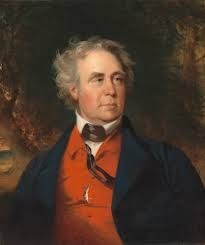|
Richard Mentor Johnson (1780–1850) rose from a Kentucky frontier background to become the ninth Vice President of the United States under President Martin Van Buren. Born in 1780 at Bryant’s Station, Virginia (soon to be Kentucky), Johnson left the family farm at sixteen to attend a grammar school and later studied law at Transylvania University. Johnson passed the Kentucky Bar in 1802 and set up a law practice in Great Crossings. His father gave him a plantation with enslaved laborers, placing him firmly within Kentucky’s slaveholding elite. Military and Political CareerJohnson entered politics early, serving in the Kentucky legislature at age 23. He later served in the U.S. House of Representatives (1807–1819, 1829–1837) and in the Senate (1822–1829). He became known for supporting debtors, opposing imprisonment for debt, advocating for veterans, and pushing for military reform, though he was often burdened by personal financial debt. His military career was closely tied to the War of 1812. Johnson raised mounted riflemen in Kentucky and fought in the Northwest campaign. At the Battle of the Thames in 1813, he was wounded. Some accounts credited him with killing the important Shawnee leader Tecumseh, though this claim remains unproven. Johnson nonetheless capitalized on the death of Tecumseh and used it to significantly bolster his political reputation.1 A protégé of Andrew Jackson and a political neighbor of fellow Kentucky enslaver Henry Clay, Johnson positioned himself within the Democratic Party’s rising nationalist and populist wing. When Martin Van Buren sought re-election in 1836, Johnson was placed on the ticket to balance the party geographically and ideologically. He was a Southerner loyal to Jackson with the military credentials Van Buren lacked. But Johnson’s personal life and conduct made him a liability to the Democratic ticket. Johnson failed to secure an Electoral College majority in 1836, and under the provisions of the Twelfth Amendment, the Senate selected him as Vice President. He remains the only Vice President in U.S. history elected this way. 
Toronto Public Library Enslavement and ExploitationJohnson enslaved people throughout his life. Around 1815, following his father’s death, he began a non-consensual sexual relationship with Julia Ann Chinn, a child he enslaved at his Blue Spring Plantation. Historian Dr. Amrita Myers, in The Vice President’s Black Wife: The Untold Life of Julia Chinn (2023), has shown that Chinn was likely between 14 and 16 years old when this exploitation began. Under Kentucky law, she remained legally enslaved and could not consent to marriage or partnership. Chinn and Johnson had two daughters, Imogen and Adaline, whom he publicly acknowledged. This was unusual among white enslavers. Chinn herself played a central role in the operation of his estate. She managed Blue Spring plantation in Johnson’s absence and served as the doctor for both the plantation community and the nearby Choctaw Academy, which Johnson oversaw. The Choctaw Academy was established in 1825 on Johnson’s land at Blue Spring with funding from the federal government and from the Choctaw Nation. For Johnson, the Academy functioned primarily as a business. Deeply encumbered by debt, he admitted privately that “nothing but being in debt would ever have induced me to undergo what I have."2 His position allowed him to shape policy at the Indian Office, to avoid effective government oversight, and to prioritize his own advatage over the interests of the Choctaw.3
Visit our keyboard shortcuts docs for details
In this interview conducted in 2021 we sit down with historian Dr. Amrita Myers about Julia Chinn and Richard Johnson, the subjects of her forthcoming book. 
John Neagle / National Gallery of Art Later Career and LegacyJohnson’s personal life made him a controversial national figure. His open acknowledgment of his mixed-race daughters sparked widespread condemnation from contemporaries. He served as Vice President from 1837 to 1841 under Martin Van Buren but proved politically divisive and was not re-nominated. Even Johnson’s former supporter, Jackson, boldly told Van Buren “I now tell you, if Col Johnson is the nominee, it will loose the democracy thousands of votes, Jeopardise this state, & surely loose Kentucky.”4 Johnson died in 1850 in Kentucky. His legacy is marked both by his military and political roles and by his participation in and perpetuation of slavery, including his exploitation of Julia Chinn and other enslaved women.5 Julia Chinn, whose life was long overshadowed by Johnson, is now recognized in her own right. Her story as plantation manager, community medical provider, and mother of Imogen and Adaline is the subject of renewed scholarship and public attention. References1 James Bradley, Martin Van Buren: America’s First Politician (Oxford University Press, 2024), 304. |
Last updated: September 18, 2025
